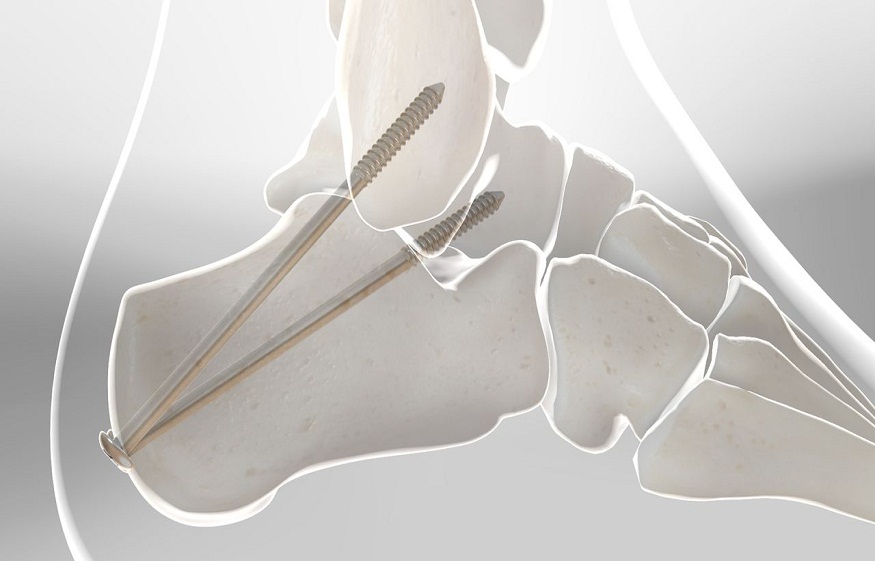Spinal health advancements have opened new doors for treating degenerative disc disease and related spinal conditions. Two prominent options—spinal disc replacement and fusion surgery—are widely used, each offering distinct benefits based on the nature of the spinal issue and the patient’s lifestyle. Dr. Larry Davidson, an expert in spinal care, highlights the importance of understanding these evolving treatment options. By comparing the benefits and limitations of spinal disc replacement and fusion surgery, patients and medical professionals can make informed decisions, ensuring the best possible outcomes for spinal health and overall well-being.
Spinal Disc Replacement: Preserving Mobility and Reducing Stress on the Spine
Spinal disc replacement, also known as total disc arthroplasty, involves replacing a damaged or degenerated spinal disc with an artificial implant that mimics the movement and flexibility of a natural disc. Initially developed to address spinal issues without the limitations associated with fusion, disc replacement technology has advanced considerably in recent decades. Modern artificial discs are designed to allow patients a broader range of movement and comfort, featuring enhanced durability, better materials and improved anatomical compatibility.
One of the most notable potential benefits of disc replacement is its aim to preserve motion between vertebrae, allowing patients more natural movement post-surgery. This preservation of motion also helps in reducing stress on adjacent spinal segments, potentially lowering the risk of further degeneration in those areas—a common concern with fusion procedures. For active individuals and those who value maintaining spinal flexibility, disc replacement may offer potential quality-of-life improvements. However, disc replacement has limitations, particularly for patients with certain health factors or complex spinal conditions. Factors like reduced bone density, pre-existing spinal instability or severe degeneration can impact the effectiveness of artificial discs. These situations may increase the risk of implant loosening or wear, potentially making disc replacement a less favorable option compared to fusion for some patients.
Spinal Fusion Surgery: Providing Stability for Severe Degenerative Conditions
Spinal fusion surgery, a long-established procedure, aims to stabilize the spine by fusing two or more vertebrae, effectively creating a single, solid bone segment. This procedure is often employed when pain and instability are due to severe degeneration, significant deformities or other complex spinal conditions. While spinal fusion limits mobility at the treated segment, it can significantly alleviate pain by reducing movement in the problem area. This stability may be beneficial for patients who may not be well-suited for disc replacement due to more advanced degeneration or weakened bone structure.
The procedure itself has evolved significantly, transitioning from traditional open surgeries to minimally invasive techniques that allow for smaller incisions and quicker recovery times. For many patients with chronic, severe back pain and limited movement tolerance, fusion offers a reliable and lasting solution. However, there are drawbacks to fusion, primarily the loss of mobility. By fusing the vertebrae, movement is restricted in the affected area, which may feel limiting to more active individuals. Additionally, this immobility can lead to a condition called adjacent segment disease (ASD), where the added stress on neighboring vertebrae accelerates wear and tear over time. Despite these concerns, fusion remains a preferred treatment option for older patients or those with severe degenerative disc disease, as it provides a predictable and often successful outcome in terms of pain relief and spinal stability.
Comparing Mobility, Recovery and Suitability: Key Differences Between Disc Replacement and Fusion
One of the most significant differences between spinal disc replacement and fusion surgery is the preservation of mobility. Disc replacement allows for continued movement in the treated area, a key consideration for younger or active patients who wish to maintain flexibility and a more natural range of motion. Fusion, in contrast, restricts movement in the targeted vertebrae, aiming to provide stability while limiting mobility. This limitation is not necessarily a drawback for all patients, as many individuals prioritize pain relief and stability over flexibility.
Recovery times differ between the two procedures. Both require an initial healing period, but disc replacement patients may often resume normal activities sooner. Fusion patients often need a longer adaptation period as the body stabilizes the fused segment and compensates for reduced movement.
Long-term outcomes vary as well; fusion offers well-established durability, especially for those with complex conditions. Meanwhile, disc replacement shows promising results in preserving movement, appealing to patients seeking both flexibility and relief. Suitability depends on factors like age, bone health and spinal condition—disc replacement often benefits younger patients, while fusion may suit older adults with significant degeneration.
Technological Advancements Improving Disc Replacement and Fusion Outcomes
As medical technology advances, both spinal disc replacement and fusion surgery have seen significant improvements that enhance outcomes and minimize recovery times. Innovations in implant materials, such as advanced alloys and polymer blends in disc replacements, aim to improve the longevity and compatibility of artificial discs. Furthermore, the rise of 3D printing allows for more personalized implants that can fit each patient’s specific anatomy, a development beneficial for both disc replacement and fusion.
Minimally invasive techniques, now standard in both surgeries, reduce muscle disruption, leading to smaller incisions, less tissue trauma and faster recovery with less pain and shorter hospital stays. As these methods evolve, patients experience quicker, more comfortable recovery times. Emerging advancements in biologically active implants and regenerative medicine also hold promise, potentially allowing future treatments to restore damaged discs instead of replacing or fusing them.
Choosing the Right Path for Long-Term Spinal Health
Both spinal disc replacement and fusion surgery offer unique benefits and limitations, depending on a patient’s specific needs, lifestyle goals and health factors. Disc replacement may offer potential advantages for those seeking to maintain mobility and reduce stress on surrounding vertebrae, which may be beneficial for younger, active individuals with sufficient bone density. On the other hand, fusion surgery provides a high level of pain relief and stability for more advanced conditions, which may be particularly appealing to older patients or those requiring significant spinal support. Dr. Larry Davidson emphasizes that by examining these differences, patients and practitioners can make informed decisions that align with immediate relief needs and long-term spinal health. With continued advancements in spinal surgery, future options may further expand these treatments, ultimately enhancing the quality of life for individuals facing degenerative spinal conditions.

